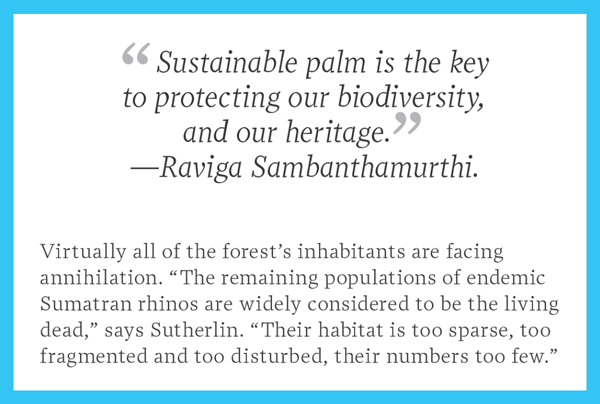CAPTIVATING STORIES
STUDENTS FOLLOW ONE RIVETING STORY THROUGHOUT THE ENTIRE CHAPTER
FROM THE OPENING PAGE TO THE END-OF CHAPTER QUESTIONS, AND EVERYWHERE IN BETWEEN, EACH CHAPTER FOLLOWS AN ENGAGING REAL STORY THAT ILLUSTRATES AND MOTIVATES CORE SCIENCE CONCEPTS. HERE ARE FOUR OF MANY PLACES IN THIS CHAPTER WHERE THE STORY UNFOLDS.

SEE PAGE 220 Laurel Sutherlin of the Rainforest Action Network went to Sumatra to gauge the impact of the expanding palm oil industry on the island.

SEE PAGES 223, 235, 238 & 242 The orangutan is among the many species being driven to the edge of extinction by the pursuit of palm oil. So much of the Sumatran rain forest land has been laid low that Laurel Sutherlin and his team had to travel overnight and through the morning to reach an untouched section. But once there, they witnessed firsthand its rich biodiversity.
Vier Pfoten/Four Paws/RHOI/Rex Features via AP Images
Page XXI
CHAPTER 12:
PALM PLANET: Can we have tropical forests and our palm oil too?

SEE PAGE 233 In 2012, Malaysian geneticist Raviga Sambanthamurthi and her team of researchers discovered the SHELL gene, which is responsible for the most productive palm oil fruit. Farmers now can identify the seeds for this fruit before planting, and produce more oil per hectare.

SEE PAGES 244-245 Consumer demands are leading to changes in the palm oil industry. Thanks to the “Snack Food 20” Campaign by Laurel Sutherlin’s Rainforest Action Network, some of the world’s largest snack food companies have pledged to use only sustainably produced palm oil.
Page XXII